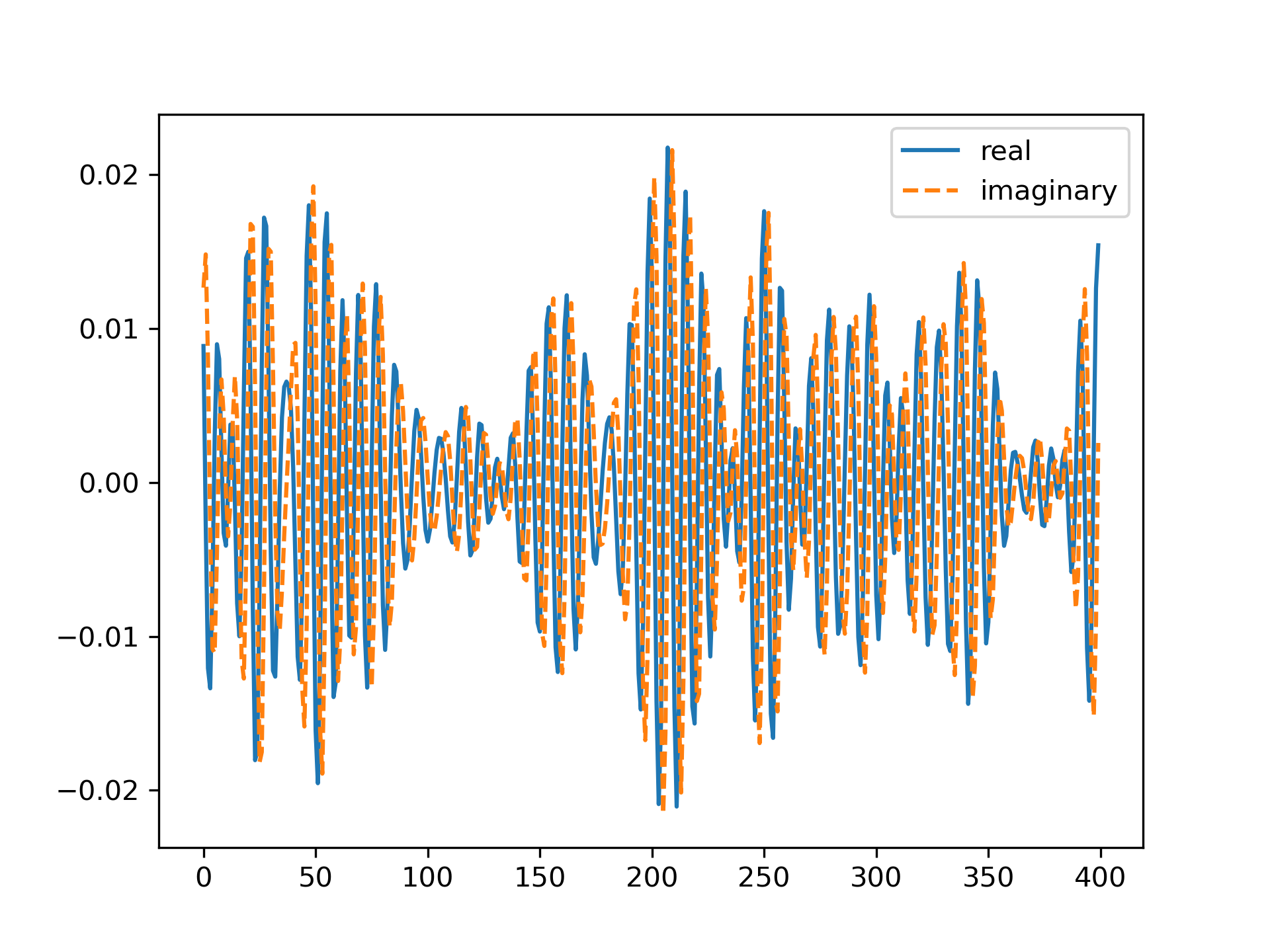ifft(a, n=None, axis=-1, norm=None)
This function computes the inverse of the one-dimensional n-point discrete Fourier transform computed by fft
. In other words, ifft(fft(a)) == a
to within numerical accuracy. For a general description of the algorithm and definitions, see numpy.fft
.
The input should be ordered in the same way as is returned by fft
, i.e.,
a[0]
should contain the zero frequency term,
a[1:n//2]
should contain the positive-frequency terms,
a[n//2 + 1:]
should contain the negative-frequency terms, in increasing order starting from the most negative frequency.
For an even number of input points, A[n//2]
represents the sum of the values at the positive and negative Nyquist frequencies, as the two are aliased together. See numpy.fft
for details.
If the input parameter n is larger than the size of the input, the input is padded by appending zeros at the end. Even though this is the common approach, it might lead to surprising results. If a different padding is desired, it must be performed before calling ifft
.
Input array, can be complex.
Length of the transformed axis of the output. If n is smaller than the length of the input, the input is cropped. If it is larger, the input is padded with zeros. If n is not given, the length of the input along the axis specified by :None:None:`axis` is used. See notes about padding issues.
Axis over which to compute the inverse DFT. If not given, the last axis is used.
Normalization mode (see numpy.fft
). Default is "backward". Indicates which direction of the forward/backward pair of transforms is scaled and with what normalization factor.
The "backward", "forward" values were added.
If :None:None:`axis` is not a valid axis of a.
The truncated or zero-padded input, transformed along the axis indicated by :None:None:`axis`, or the last one if :None:None:`axis` is not specified.
Compute the one-dimensional inverse discrete Fourier Transform.
fft
The one-dimensional (forward) FFT, of which :None:None:`ifft` is the inverse
ifft2
The two-dimensional inverse FFT.
ifftn
The n-dimensional inverse FFT.
numpy.fft
An introduction, with definitions and general explanations.
>>> np.fft.ifft([0, 4, 0, 0]) array([ 1.+0.j, 0.+1.j, -1.+0.j, 0.-1.j]) # may vary
Create and plot a band-limited signal with random phases:
>>> import matplotlib.pyplot as plt
... t = np.arange(400)
... n = np.zeros((400,), dtype=complex)
... n[40:60] = np.exp(1j*np.random.uniform(0, 2*np.pi, (20,)))
... s = np.fft.ifft(n)
... plt.plot(t, s.real, label='real') [<matplotlib.lines.Line2D object at ...>]
>>> plt.plot(t, s.imag, '--', label='imaginary') [<matplotlib.lines.Line2D object at ...>]
>>> plt.legend() <matplotlib.legend.Legend object at ...>
>>> plt.show()

The following pages refer to to this document either explicitly or contain code examples using this.
numpy.fft.ifft2
numpy.fft.fft
numpy.fft.irfft
numpy.fft.ifftn
dask.array.fft.fft_wrap
numpy.fft.ifft
Hover to see nodes names; edges to Self not shown, Caped at 50 nodes.
Using a canvas is more power efficient and can get hundred of nodes ; but does not allow hyperlinks; , arrows or text (beyond on hover)
SVG is more flexible but power hungry; and does not scale well to 50 + nodes.
All aboves nodes referred to, (or are referred from) current nodes; Edges from Self to other have been omitted (or all nodes would be connected to the central node "self" which is not useful). Nodes are colored by the library they belong to, and scaled with the number of references pointing them